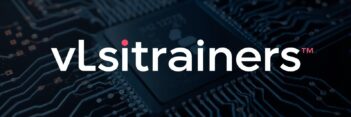In Verilog, data types define how information is stored, represented, and manipulated in hardware descriptions. Choosing the right type ensures correct behavior, precise simulation, and efficient synthesis. This article covers the main Verilog data types, their uses, and important rules.
What are Data Types?
A data type specifies:
- the range or type of values a variable can hold
- whether the item represents a physical connection (net) or a storage element (variable)
Verilog supports two broad groups of data types:
- Net types — represent physical connections in hardware
- Variable types — storage elements or variables
1. Logic Values in Verilog
Verilog uses four-valued logic:
| Logic Value | Meaning |
|---|---|
0 | Logic zero (false) |
1 | Logic one (true) |
x | Unknown / undriven |
z | High-impedance (tri-state) |
These are important in simulation to catch conflicts or uninitialized signals.
2. Nets
- Definition: Nets represent physical interconnections (wires) between hardware components.
- Common net types:
wire,wand,wor,tri, etc. - Declaration examples:
wire a;// Single-bitnet wire [5:0] b;// 6-bit vector net - Default value: Nets typically default to
z(high impedance) when not driven.
3. Registers (reg)
- Definition: Variables that hold a value until explicitly changed; akin to placeholders or storage elements.
- Declaration examples:
reg a;// single bitreg [7:0] b;// 8-bit vector - Default value:
x(unknown) when not initialized
4. Scalars vs Vectors
- Scalar: single-bit (
wire a;orreg a;) - Vector: multi-bit, where bit-width is explicitly specified.
Examples:wire [5:0],reg [3:0].
5. Constants
- Constants are values that don’t change during simulation.
- Typically used for literal values in operations or initial assignments.
- They can be sized (e.g.
8'd255,4'b1010) or unsized, depending on context.
6. Integer
integeris a 32-bit register type used for general-purpose integer arithmetic.- Example usage:
integer count; - Ideal for counters, loop indices, or where signed arithmetic may be needed.
7. Real
realis a data type for real (floating-point) values. Useful in testbenches or when modeling analog-like behavior.- Note: If assigned to an integer type, the value is rounded/truncated.
8. String
- Strings are ordered collections of characters, enclosed in double quotes (
" "). - Implementation in Verilog: stored in
regvectors, with each character taking 1 byte (8 bits). - Example:
reg [8*11-1:0] name = "Hello World";
9. Time
- The
timetype is used for storing simulation time. - Its width is at least 64 bits (implementation-dependent) to capture large time values.
- Useful in testbenches for measuring or capturing event timestamps.
10. Arrays
- Arrays allow grouping multiple instances of a data type (e.g.
reg,integer,time) into indexed collections. - Examples:
integer count_array [0:5];// 6 integersreg [3:0] var_array [0:7];// 8 elements, each 4 bitswidth.time timestamp [1:5];// array of time variables - Limitations in classic Verilog:
- Multidimensional arrays (arrays of arrays) are not allowed.
- Arrays for
realvariables are not allowed
11. Memories
- Memories in Verilog are modeled using arrays of
regelements. Each element (word) can be multi-bit. - Examples:
reg mem1 [0:511]; // 512-word memory, 1 bit eachreg [3:0] mem2 [0:511]; // 512-word memory, 4 bits each
Verilog’s variety of data types gives designers the flexibility to model both hardware connections and state. By mastering nets, regs, constants, arrays, and the special types (
real,string,time), you’ll write more reliable, synthesizable, and simulation-accurate designs.
